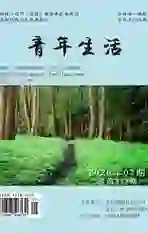Feasibility analysis of teahouse broadcasting station construction in the new media era
2020-03-30王帅龙杨跃嘉
王帅龙 杨跃嘉
Wang Shuailong,Yang Yuejia
Abstract: broadcasting is a kind of vocal language art form produced with the development of science and technology. It flourishes because of the growth of science and technology media, and also faces challenges because of the prosperity of science and technology media. At present, the broadcasting environment includes traditional radio and television stations, vehicle media where the latecomers live, and mobile app which is more popular now. In the future, whether it can be Combine with Kungfu teahouse to create micro radio station?
Key words: broadcast radio teahouse environment
1.The revival of Kungfu Teahouse
With the prosperity of Chinese traditional culture in the 21st century, "Kung Fu tea" in traditional culture, a typical elegant event of literati, is also rising in a large area. Taking Neijiang City in the southeast of Sichuan Province as an example, there are 11 pure Kung Fu tea houses (not calling mahjong) in the three main urban areas of Shizhong District, Dongxing District and Economic Development District, including three with a building area of more than 500 square meters. These emerging Kungfu teahouses, in addition to the traditional tea soaking forms, are also gradually learning from the operation methods of coffee shops, bars and other places, while integrating the Japanese understanding of minimalism, and are full of vitality in the new era of mainland China.
2.The match between the internal structure of teahouse and radio broadcasting
The tea house in the middle ancient times is not only a place for tea drinking and rest, but also a good place for finding life information and appreciating the art of opera storytelling. Therefore, the tea house itself has a deep historical origin with sound and performance art. At present, the quality of Chinese people is generally improved, and the Chinese people's eyes on art are no longer as frivolous and noisy as before. After the rapid development of China's economy, after a long period of impetuosity and noise, people yearn for peace in their hearts, and they also yearn to touch the pure things that can bring peace to people, so the relatively hierarchical art of vocal language is very suitable In line with China's current situation, the current Kungfu teahouse is also extremely suitable and in great need of combining with the art of the new era, so as to innovate in the declining Chinese tea culture, and also try and explore a new path for the radio and radio broadcasting that are facing challenges at present.
3. recent development of radio broadcasting
It's just a hundred years since the first radio station in the world came into being. The overall trend is good. Until the poor students of TV, the development of radio station fluctuates. However, the emergence of new media, the development of radio station appears a big Waterloo, even once on the verge of collapse. Now, radio and radio station are combined with mobile phone, vehicle media, etc. again, which can stabilize the development The situation, however, remains worrisome. In this case, we need to reconsider the definition of "radio" in the new era, which should be defined as the sound propagation environment or media. From this perspective, quiet teahouses with certain hardware facilities, which can transmit sound, are undoubtedly a new breakthrough, and this is also a new setting of traditional broadcast "online".
4.selection of radio broadcast content in teahouse
The teahouse broadcasting in the new era is different from the traditional broadcasting stations, but it can also be inherited. For example, in terms of content, there needs to be elegance and vulgarity. Of course, the vulgarity here is not the kitsch with no lower limit, but the rhythm with certain ups and downs.
The development of the times is not only a kind of coercion, but also a kind of support and encouragement for our thinking. The exploration of the mode of teahouse radio station and coffee shop radio station is not only the inheritance of traditional culture and media, but also the innovation of it.
reference:
[1] Zhang song. On broadcasting and hosting art. China University of media press, 2009.
[2] Chen mo. television culture. Beijing Normal University Press, 2001.
[3] Gong Chengbo. Introduction to new media. China Radio and television press, 2012.
